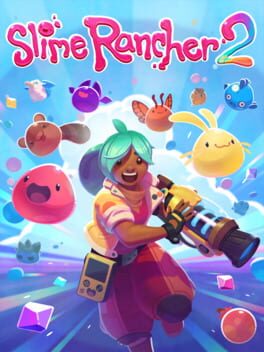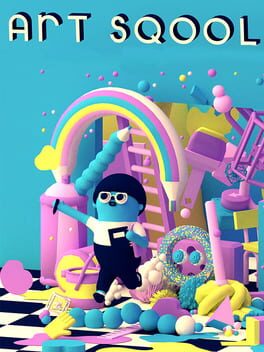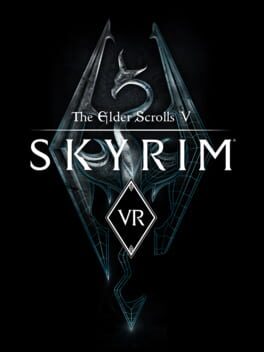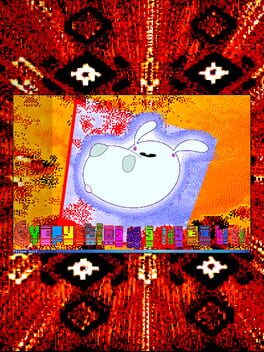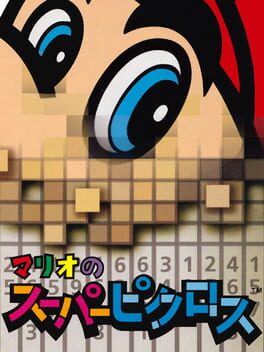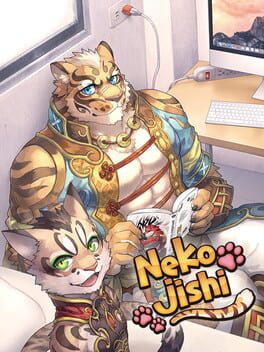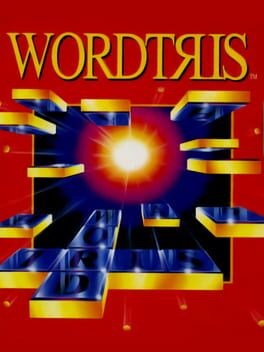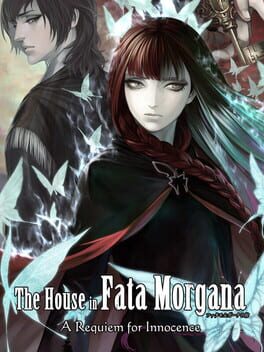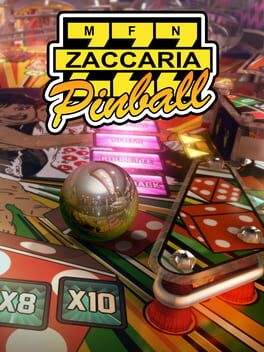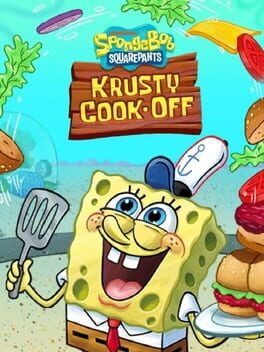NickShutter
2022
[Quick review for early access launch version]
Though it's too early to pass judgement on Slime Rancher 2 as a complete experience, the launch of the game offers players a pretty solid idea of expectations going forward. We have the heart and soul of Slime Rancher 2 in front of us, and eight hours of gameplay later, despite being pretty much what I expected, I can't help but feel a bit underwhelmed.
The core gameplay of the first Slime Rancher hasn't been tampered with much—feed slimes to get plorts, sell plorts to get money, use money to expand the farm. You also make hybrid slimes to save on space, and explore the world by platforming to areas possibly intended for later in the game (something I genuinely love about the first game). There aren't any big new mechanics, but a few things have been expanded upon or streamlined. For example, upgrades now also cost plorts and resources on top of money, a wise decision that keeps players from gathering upgrades too fast. Players no longer have to place resource extractors down—they're harvested from specific locations once a certain vac upgrade is acquired. There are also a few more slimes and foods now, with more to come, though that's fully expected. I very much appreciate the presence of bat slimes.
Now, these updates to the game are all fine and dandy, but none of them feel particularly substantial. Nothing here screams "Slime Rancher 2!" so much as they do "Slime Rancher 1.5!" Instead of getting the impression that this is a grand new adventure, I'm left feeling like I'm playing the first game but with a big graphical overhaul. The visuals are nice, and I'm especially fond of the new art direction, but I feel like it was given special priority over updates to the core gameplay experience. Slime Rancher 2 plays it very, very safe. The benefit to this is that Slime Rancher 1 is a very, very good game—so on its own, Slime Rancher 2 has the beginnings of one as well. But when I played Slime Rancher 1—even in its early access state—everything was new, and everything was a surprise. Slime Rancher 2, with its copied homework, has yet to offer that.
Though it's too early to pass judgement on Slime Rancher 2 as a complete experience, the launch of the game offers players a pretty solid idea of expectations going forward. We have the heart and soul of Slime Rancher 2 in front of us, and eight hours of gameplay later, despite being pretty much what I expected, I can't help but feel a bit underwhelmed.
The core gameplay of the first Slime Rancher hasn't been tampered with much—feed slimes to get plorts, sell plorts to get money, use money to expand the farm. You also make hybrid slimes to save on space, and explore the world by platforming to areas possibly intended for later in the game (something I genuinely love about the first game). There aren't any big new mechanics, but a few things have been expanded upon or streamlined. For example, upgrades now also cost plorts and resources on top of money, a wise decision that keeps players from gathering upgrades too fast. Players no longer have to place resource extractors down—they're harvested from specific locations once a certain vac upgrade is acquired. There are also a few more slimes and foods now, with more to come, though that's fully expected. I very much appreciate the presence of bat slimes.
Now, these updates to the game are all fine and dandy, but none of them feel particularly substantial. Nothing here screams "Slime Rancher 2!" so much as they do "Slime Rancher 1.5!" Instead of getting the impression that this is a grand new adventure, I'm left feeling like I'm playing the first game but with a big graphical overhaul. The visuals are nice, and I'm especially fond of the new art direction, but I feel like it was given special priority over updates to the core gameplay experience. Slime Rancher 2 plays it very, very safe. The benefit to this is that Slime Rancher 1 is a very, very good game—so on its own, Slime Rancher 2 has the beginnings of one as well. But when I played Slime Rancher 1—even in its early access state—everything was new, and everything was a surprise. Slime Rancher 2, with its copied homework, has yet to offer that.
2019
(Adjusted from a review written in 2019 Feb)
It's always nice to see Julian Glander's art on my social media feeds—it's charming, it looks great, and it's instantly recognizable and unique. I respect Glander a lot as an independent artist and content creator. I truly believe that artists like Glander keep art vibrant and alive in the Internet era, which is part of what makes writing this review so difficult. I generally don't like making heavy criticisms of these kinds of artists. But the monetization of one's work—which I wholeheartedly support—does, I feel, open creators up to a higher level of critique. ART SQOOL has Glander's signature aesthetic, the music is fairly great, and the humor is generally pretty good, but it falls short on gameplay—even approaching it as an experimental audiovisual experience.
It's unfortunate that an art game billing itself as having "assignments generated & graded by an A.I." actually has "assignments graded arbitrarily with no regard for what you've drawn." Don't buy this under the impression that some program is going to actually analyze your art, because that certainly isn't the case. And that's unfortunate, because I feel that the branding of the game—the selling point, in fact—conveys the opposite. Don't get me wrong, I wasn't under the impression that it was actually some super-advanced AI that was going to analyze my work. But I was hoping that my work would, y'know, have at least some impact on the scoring, but that's not the case here.
One could say that's an intentional dig at how academia tries to weigh subjective works on an objective scale, but there's nothing else to really suggest that's the case, so the interpretation seems generous. There was no real desire to actually carry out the prompts the game gave me once I realized that the "A.I." is actually just throwing out a random score. It's possible to see this when being handed a "D" or "F" grade—the professor sends you back out to campus to "try again," but a quick press of the undo button brings your old work back. This allows you to re-submit the same work for a potential passing grade. Sure, one could just do the prompts for one's own amusement, but they are often vague or difficult to the point of impossibility—usually as a joke. While the humor lands every once in a while, in time this just feels like a joke at the player's expense. "Here's a vague challenge, draw something random and hope the A.I. picks a good letter this time."
One must also traverse the campus to find and unlock the various tools and colors. This is neat at first, but the world quickly reveals itself as empty with no interactivity. I actually became disinterested in finding all of the artist tools, and ended the game missing two of them. Finishing the game requires the player to complete several prompts, and once that's done, the player is unceremoniously brought right to the menu screen. No "you graduated ART SQOOL" or "you beat the game!" Attempting to continue the save will drop the player back into the campus world, but with no sketch pad or prompts. Sorry, no post-game free-draw mode. This wasn't the only gameplay issue I had, either—footstep noises continue as one "walks" through the air, and occasionally the player may spawn without a pad to draw on.
There was the promise of something greater that was left unfulfilled in ART SQOOL—that, combined with some rough edges, on top of my rapidly deflated hype, really tore into me as the prompts continued. I really wanted this game to be one of those special little experiences, but ended up with a bit of buyer's remorse instead.
It's always nice to see Julian Glander's art on my social media feeds—it's charming, it looks great, and it's instantly recognizable and unique. I respect Glander a lot as an independent artist and content creator. I truly believe that artists like Glander keep art vibrant and alive in the Internet era, which is part of what makes writing this review so difficult. I generally don't like making heavy criticisms of these kinds of artists. But the monetization of one's work—which I wholeheartedly support—does, I feel, open creators up to a higher level of critique. ART SQOOL has Glander's signature aesthetic, the music is fairly great, and the humor is generally pretty good, but it falls short on gameplay—even approaching it as an experimental audiovisual experience.
It's unfortunate that an art game billing itself as having "assignments generated & graded by an A.I." actually has "assignments graded arbitrarily with no regard for what you've drawn." Don't buy this under the impression that some program is going to actually analyze your art, because that certainly isn't the case. And that's unfortunate, because I feel that the branding of the game—the selling point, in fact—conveys the opposite. Don't get me wrong, I wasn't under the impression that it was actually some super-advanced AI that was going to analyze my work. But I was hoping that my work would, y'know, have at least some impact on the scoring, but that's not the case here.
One could say that's an intentional dig at how academia tries to weigh subjective works on an objective scale, but there's nothing else to really suggest that's the case, so the interpretation seems generous. There was no real desire to actually carry out the prompts the game gave me once I realized that the "A.I." is actually just throwing out a random score. It's possible to see this when being handed a "D" or "F" grade—the professor sends you back out to campus to "try again," but a quick press of the undo button brings your old work back. This allows you to re-submit the same work for a potential passing grade. Sure, one could just do the prompts for one's own amusement, but they are often vague or difficult to the point of impossibility—usually as a joke. While the humor lands every once in a while, in time this just feels like a joke at the player's expense. "Here's a vague challenge, draw something random and hope the A.I. picks a good letter this time."
One must also traverse the campus to find and unlock the various tools and colors. This is neat at first, but the world quickly reveals itself as empty with no interactivity. I actually became disinterested in finding all of the artist tools, and ended the game missing two of them. Finishing the game requires the player to complete several prompts, and once that's done, the player is unceremoniously brought right to the menu screen. No "you graduated ART SQOOL" or "you beat the game!" Attempting to continue the save will drop the player back into the campus world, but with no sketch pad or prompts. Sorry, no post-game free-draw mode. This wasn't the only gameplay issue I had, either—footstep noises continue as one "walks" through the air, and occasionally the player may spawn without a pad to draw on.
There was the promise of something greater that was left unfulfilled in ART SQOOL—that, combined with some rough edges, on top of my rapidly deflated hype, really tore into me as the prompts continued. I really wanted this game to be one of those special little experiences, but ended up with a bit of buyer's remorse instead.
2020
If—like me—you're trying to make a Living Dex, this is the way to store all of your Pokémon in one place. Besides that, I'm unsure of why anyone would deposit their little guys in here. In theory, it's cool to have a space to store all of your Pokémon across every generation (1–7 on a 3DS with Pokémon Bank and the rest on Switch), especially since that hasn't always been the case. Without the guarantee that players will be able to bring those Pokémon into future games, though, Pokémon JAIL feels like a more apt title.
To rub salt in the wound, it's a pretty flimsy subscription service without much to it. PNGs instead of models for the Pokémon, limited information when it could have been more encyclopedic (like a Pokédex), and nothing to do on the side like breeding, EV training, Poké Pelago, etc... not that they really promised anything like that, but HOME feels like soulless software that could have been much more interesting.
To rub salt in the wound, it's a pretty flimsy subscription service without much to it. PNGs instead of models for the Pokémon, limited information when it could have been more encyclopedic (like a Pokédex), and nothing to do on the side like breeding, EV training, Poké Pelago, etc... not that they really promised anything like that, but HOME feels like soulless software that could have been much more interesting.
2019
I had high hopes for this game when I bought the Founder's pack a long time ago, when there was only one mountain. The game was free to play back then, and the Founder's pack was $50. I felt like chipping in for something I thought had a lot of potential. And potential it did have—exploring the wide open mountain was neat, the physics worked, people who bought the Founder's pack had special gear, and snowmobiles were supposedly in the works.
Over time, though, I saw the game start to degrade. The physics got worse and worse, controls became increasingly stubborn, and when online rolled out it was a buggy, laggy mess. Soon after, microtransactions started and the mountain I enjoyed exploring got locked under a paywall. I didn't have access to it even though I bought the damn Founder's pack! That's when I gave up on the game entirely, uninstalling it without looking back.
Apparently, the game never recovered. Multiplayer servers were removed. Support for VR mode, which was by all accounts pretty solid, was also removed. The game is $15 now and worse than it was when it was free. Poppermost built a really great foundation for what could have been the next best winter sports game, but unable to live up to their promises, ultimately destroyed it.
Over time, though, I saw the game start to degrade. The physics got worse and worse, controls became increasingly stubborn, and when online rolled out it was a buggy, laggy mess. Soon after, microtransactions started and the mountain I enjoyed exploring got locked under a paywall. I didn't have access to it even though I bought the damn Founder's pack! That's when I gave up on the game entirely, uninstalling it without looking back.
Apparently, the game never recovered. Multiplayer servers were removed. Support for VR mode, which was by all accounts pretty solid, was also removed. The game is $15 now and worse than it was when it was free. Poppermost built a really great foundation for what could have been the next best winter sports game, but unable to live up to their promises, ultimately destroyed it.
[Valve Index]
Pretty much any game developer can tell you that making a title for virtual reality isn't as simple as "hitting the VR button." A lot of work goes into making a VR title—especially one worth actually playing. That makes it all the more annoying that it really does feel like Bethesda just hit the "make it VR" button when porting The Elder Scrolls V: Skyrim Special Edition to VR. Aside from half-baked hand tracking and a custom starting area, very little care was put into making Skyrim an interesting VR game. While it's neat to explore Tamriel in a more immersive way, the game lacks the physicality that VR promises. There's very little in the way of physics interactions—your hands barely interact with the environment, either phasing through people and items or sending them flying erratically. Without collision, melee combat feels like whiffing at the air. Congratulations, you're playing Skyrim again, but this time, you're doing it standing up. To add insult to injury, players are expected to purchase this rush-job separately from the desktop version of Special Edition—which I still don't even own. If they were going to put so little effort into it, it should have been a free update to Special Edition and not a full-price standalone purchase.
As my score suggests, however, not all is lost. I had quite a good time playing Skyrim in virtual reality, but that's despite Bethesda—not thanks to them. If you're willing to spend half a day modding the game and learning how to correctly apply confusing shit like DynDOLOD, Skyrim VR is more than just a salvageable experience—it's one worth getting into. The Elder Scrolls fan community has done an amazing job of making this port worth playing. With a handy guide and a bit of patience on the player's part, it's possible to make the world of Tamriel a beautiful, jaw-dropping experience worth exploring for the visuals alone. The combat and gameplay... well, it's still Skyrim. That said, I feel like the notoriously same-y combat is made a bit more interesting when the swings of your sword, the drawing of your bow, and the casting of your spells are done with your own hands' movements. There's an additional layer of immersion there that makes the combat feel more worthwhile than the one-button-mashing of the desktop version. If you have a headset, an attachment to Skyrim, and some time to burn, I think it's worth trying out the game after modding it. Just... don't buy it. Bethesda could do without the encouragement.
Pretty much any game developer can tell you that making a title for virtual reality isn't as simple as "hitting the VR button." A lot of work goes into making a VR title—especially one worth actually playing. That makes it all the more annoying that it really does feel like Bethesda just hit the "make it VR" button when porting The Elder Scrolls V: Skyrim Special Edition to VR. Aside from half-baked hand tracking and a custom starting area, very little care was put into making Skyrim an interesting VR game. While it's neat to explore Tamriel in a more immersive way, the game lacks the physicality that VR promises. There's very little in the way of physics interactions—your hands barely interact with the environment, either phasing through people and items or sending them flying erratically. Without collision, melee combat feels like whiffing at the air. Congratulations, you're playing Skyrim again, but this time, you're doing it standing up. To add insult to injury, players are expected to purchase this rush-job separately from the desktop version of Special Edition—which I still don't even own. If they were going to put so little effort into it, it should have been a free update to Special Edition and not a full-price standalone purchase.
As my score suggests, however, not all is lost. I had quite a good time playing Skyrim in virtual reality, but that's despite Bethesda—not thanks to them. If you're willing to spend half a day modding the game and learning how to correctly apply confusing shit like DynDOLOD, Skyrim VR is more than just a salvageable experience—it's one worth getting into. The Elder Scrolls fan community has done an amazing job of making this port worth playing. With a handy guide and a bit of patience on the player's part, it's possible to make the world of Tamriel a beautiful, jaw-dropping experience worth exploring for the visuals alone. The combat and gameplay... well, it's still Skyrim. That said, I feel like the notoriously same-y combat is made a bit more interesting when the swings of your sword, the drawing of your bow, and the casting of your spells are done with your own hands' movements. There's an additional layer of immersion there that makes the combat feel more worthwhile than the one-button-mashing of the desktop version. If you have a headset, an attachment to Skyrim, and some time to burn, I think it's worth trying out the game after modding it. Just... don't buy it. Bethesda could do without the encouragement.
This review contains spoilers
[Written in 2018]
Nathalie Lawhead's EVERYTHING IS GOING TO BE OK is a video game art piece taking the form of an operating system full of "programs" with various levels of interactivity. The point of the game is to simply take in whatever fairly strange and abstract experience each of these programs have to offer, usually featuring amorphous bunny-like creatures with high-pitched voices and a penchant for soul-crushing pessimism. Occasionally one of these programs will partly offer an unexpected form of media, such as poetry.
Like with many art games, different people are going to take away different experiences, and those experiences are arguably prone to a higher level of subjectivity than with other styles of games. Explaining EVERYTHING IS GOING TO BE OK to someone who hasn’t played it before isn’t terribly helpful, and having that experience for oneself is a fairly important contextual piece when dealing with other people’s own personal experiences with the game. EVERYTHING IS GOING TO BE OK’s polarizing aesthetic choices and the way it handles its difficult and serious themes is going to draw a different reaction depending on who views it, making it difficult to praise the individual elements of the game as being "good." That said, as a person with some level of insight and experience, I can tell why I think the presentation of this game is the way it is, and why it’s not necessarily "bad." That makes this less of a "review" of the game, and more of a "defense." While most of the comments I've seen are in praise of the art piece, there are a few dissenters and this is largely a response. If you haven’t played EVERYTHING IS GOING TO BE OK yet, and your curiosity has been piqued, now’s the time to stop reading this and spend a good twenty-to-thirty minutes checking it out.
The primary topic holding these programs together is mental illness, with themes of anxiety and depression drenching EVERYTHING IS GOING TO BE OK to an extreme degree. These themes aren't approached with any level of subtlety, either – references to mental illness are incredibly on-the-nose and constant. The player is barraged by high-pitched bunnies mentioning their loss of hope and the will to live, social anxiety, and feelings of worthlessness. This is related to the most persistent criticism of the game – the one I personally wish to defend against the most. Many people have expressed that the thematic content of the game is poorly handled. Its lack of subtlety in regards to topics regarding mental illness, the endless repetition of depression and anxiety-related dialogue, and it’s very overt imagery have garnered it some flak. Some find it disrespectful and mocking towards those with illnesses, others think it’s annoying or edgy, and some people are in both boats. However, I think people who are viewing it in that way might be missing the point. Mental illness has the ability to take over one’s life in a very pervasive way, often destroying relationships and introducing a constant stream of thoughts of despair and self-loathing. For those with anxiety and depression, their condition can become overbearing and affect every aspect of their lives. For those who are dealing with the most extreme end of mental illnesses, these thoughts can dominate their lives. There is nothing subtle about mental illness. This is how it is. Once this has been realized, the game’s detractors become part of the point. Are the ones who deride this game for not being subtle enough the same type of people who are naïve enough to ask those with illness to be more subtle about it? To just "cheer up" or "be quiet"? To just "drink some water" or "get some fresh air"? While I can’t give any hard evidence to support that detractors of the game are completely ignorant about how mental illness works, a quick glance through the comments on videos related to the art piece show that many mentally ill folks find the game intensely relatable. People with mental illnesses seem to show a tendency for praising the game for its brashness and accuracy, which means many of the criticisms are likely coming from those who aren’t intimately familiar with the subject matter at hand. Like it or not, Nathalie Lawhead has created an accurate depiction of what it is like to suffer a cocktail of mental conditions that often go hand in hand. Regardless of whether or not she’s an individual with mental illness, regardless of whether or not this is a vent piece, regardless of whether or not any of this was intended, that much is true.
While I would normally want to discuss the visual and sound design of a game before getting into the nitty-gritty thematic details, I think it’s important to establish the latter first in this case because I feel like the aesthetic is heavily dependent on the theme. Visually, the game falls into the "post-Internet Microsoft Paint" and "eye-strain" aesthetics, featuring heavily posterized and clashing colors, simply-drawn designs mixed with clip art and compressed videos, and flashing apocalyptic imagery. The game’s very intense visuals, the loud and compressed sound effects, and the high-pitched and repetitive dialogue help contribute to the ever-punishing nature of the game. Regardless of how you feel about the way it looks and sounds, it’s going to capture your attention immediately while demanding you to stay. It’s a game that refuses to be ignored. These elements of the game are a reflection of its themes. Attention-grabbing, repetitive, anxiety-inducing, and exhausting, the presentation of the game strives to become the true essence of its themes. Its success in this regard is going to be contingent largely on one’s familiarity with the theme at hand, but that’s not to say that one has to be mentally ill in order to come away with a positive experience.
At this point I’ve gone over the most important elements that I’ve wanted to cover, but before I end this analysis I want to draw attention to the most persistent trait of the game: the use of depressed bunny-like blob creatures as the focus of attention, and their failure to defeat their negative emotions. Images of a suicidal bunnies with piercing voices getting severely injured or dying might bring to mind childish Newgrounds animations, or perhaps one might think that’s something a person who shops exclusively at Hot Topic would find funny. However, I would not be surprised if the cute characters of EVERYTHING IS GOING TO BE OK are meant to represent the facade of normality and happiness that people with mental illness are pressured into adopting. Bunnies are cute, and are associated with comfort and warmth. Comfort and warmth are associated with happiness and contentment. The bunnies of EVERYTHING IS GOING TO BE OK often lie about or hide their negative feelings from others while pretending to be happy or optimistic about the future. Their cute form is a literalization of the mask they’ve put on for others, and the lie they tell themselves and others is right there in the title of the game.
I walked away from EVERYTHING IS GOING TO BE OK thinking. I couldn’t get it out of my head. The more I thought about the game, the more I wanted to write about the conclusions I had made. Whether one appreciates it or not, my hope is that the game at least gets every player that walks away from it to do that much. I feel that passing off the game as shallow is criminally underestimating it even just as an audiovisual experience, and I think it’s important that others write about their own feelings and interpretations of what they believe the game has or has not accomplished. I don’t think that what I’ve written here is definite. This is simply the impression I was left with after I was finished. While others may feel similarly, I would hope that they have other points to contribute. If you, like me, are bad at following instructions and have read this far without actually playing the game, I highly recommend EVERYTHING IS GOING TO BE OK for those who have the energy to go through it.
Nathalie Lawhead's EVERYTHING IS GOING TO BE OK is a video game art piece taking the form of an operating system full of "programs" with various levels of interactivity. The point of the game is to simply take in whatever fairly strange and abstract experience each of these programs have to offer, usually featuring amorphous bunny-like creatures with high-pitched voices and a penchant for soul-crushing pessimism. Occasionally one of these programs will partly offer an unexpected form of media, such as poetry.
Like with many art games, different people are going to take away different experiences, and those experiences are arguably prone to a higher level of subjectivity than with other styles of games. Explaining EVERYTHING IS GOING TO BE OK to someone who hasn’t played it before isn’t terribly helpful, and having that experience for oneself is a fairly important contextual piece when dealing with other people’s own personal experiences with the game. EVERYTHING IS GOING TO BE OK’s polarizing aesthetic choices and the way it handles its difficult and serious themes is going to draw a different reaction depending on who views it, making it difficult to praise the individual elements of the game as being "good." That said, as a person with some level of insight and experience, I can tell why I think the presentation of this game is the way it is, and why it’s not necessarily "bad." That makes this less of a "review" of the game, and more of a "defense." While most of the comments I've seen are in praise of the art piece, there are a few dissenters and this is largely a response. If you haven’t played EVERYTHING IS GOING TO BE OK yet, and your curiosity has been piqued, now’s the time to stop reading this and spend a good twenty-to-thirty minutes checking it out.
The primary topic holding these programs together is mental illness, with themes of anxiety and depression drenching EVERYTHING IS GOING TO BE OK to an extreme degree. These themes aren't approached with any level of subtlety, either – references to mental illness are incredibly on-the-nose and constant. The player is barraged by high-pitched bunnies mentioning their loss of hope and the will to live, social anxiety, and feelings of worthlessness. This is related to the most persistent criticism of the game – the one I personally wish to defend against the most. Many people have expressed that the thematic content of the game is poorly handled. Its lack of subtlety in regards to topics regarding mental illness, the endless repetition of depression and anxiety-related dialogue, and it’s very overt imagery have garnered it some flak. Some find it disrespectful and mocking towards those with illnesses, others think it’s annoying or edgy, and some people are in both boats. However, I think people who are viewing it in that way might be missing the point. Mental illness has the ability to take over one’s life in a very pervasive way, often destroying relationships and introducing a constant stream of thoughts of despair and self-loathing. For those with anxiety and depression, their condition can become overbearing and affect every aspect of their lives. For those who are dealing with the most extreme end of mental illnesses, these thoughts can dominate their lives. There is nothing subtle about mental illness. This is how it is. Once this has been realized, the game’s detractors become part of the point. Are the ones who deride this game for not being subtle enough the same type of people who are naïve enough to ask those with illness to be more subtle about it? To just "cheer up" or "be quiet"? To just "drink some water" or "get some fresh air"? While I can’t give any hard evidence to support that detractors of the game are completely ignorant about how mental illness works, a quick glance through the comments on videos related to the art piece show that many mentally ill folks find the game intensely relatable. People with mental illnesses seem to show a tendency for praising the game for its brashness and accuracy, which means many of the criticisms are likely coming from those who aren’t intimately familiar with the subject matter at hand. Like it or not, Nathalie Lawhead has created an accurate depiction of what it is like to suffer a cocktail of mental conditions that often go hand in hand. Regardless of whether or not she’s an individual with mental illness, regardless of whether or not this is a vent piece, regardless of whether or not any of this was intended, that much is true.
While I would normally want to discuss the visual and sound design of a game before getting into the nitty-gritty thematic details, I think it’s important to establish the latter first in this case because I feel like the aesthetic is heavily dependent on the theme. Visually, the game falls into the "post-Internet Microsoft Paint" and "eye-strain" aesthetics, featuring heavily posterized and clashing colors, simply-drawn designs mixed with clip art and compressed videos, and flashing apocalyptic imagery. The game’s very intense visuals, the loud and compressed sound effects, and the high-pitched and repetitive dialogue help contribute to the ever-punishing nature of the game. Regardless of how you feel about the way it looks and sounds, it’s going to capture your attention immediately while demanding you to stay. It’s a game that refuses to be ignored. These elements of the game are a reflection of its themes. Attention-grabbing, repetitive, anxiety-inducing, and exhausting, the presentation of the game strives to become the true essence of its themes. Its success in this regard is going to be contingent largely on one’s familiarity with the theme at hand, but that’s not to say that one has to be mentally ill in order to come away with a positive experience.
At this point I’ve gone over the most important elements that I’ve wanted to cover, but before I end this analysis I want to draw attention to the most persistent trait of the game: the use of depressed bunny-like blob creatures as the focus of attention, and their failure to defeat their negative emotions. Images of a suicidal bunnies with piercing voices getting severely injured or dying might bring to mind childish Newgrounds animations, or perhaps one might think that’s something a person who shops exclusively at Hot Topic would find funny. However, I would not be surprised if the cute characters of EVERYTHING IS GOING TO BE OK are meant to represent the facade of normality and happiness that people with mental illness are pressured into adopting. Bunnies are cute, and are associated with comfort and warmth. Comfort and warmth are associated with happiness and contentment. The bunnies of EVERYTHING IS GOING TO BE OK often lie about or hide their negative feelings from others while pretending to be happy or optimistic about the future. Their cute form is a literalization of the mask they’ve put on for others, and the lie they tell themselves and others is right there in the title of the game.
I walked away from EVERYTHING IS GOING TO BE OK thinking. I couldn’t get it out of my head. The more I thought about the game, the more I wanted to write about the conclusions I had made. Whether one appreciates it or not, my hope is that the game at least gets every player that walks away from it to do that much. I feel that passing off the game as shallow is criminally underestimating it even just as an audiovisual experience, and I think it’s important that others write about their own feelings and interpretations of what they believe the game has or has not accomplished. I don’t think that what I’ve written here is definite. This is simply the impression I was left with after I was finished. While others may feel similarly, I would hope that they have other points to contribute. If you, like me, are bad at following instructions and have read this far without actually playing the game, I highly recommend EVERYTHING IS GOING TO BE OK for those who have the energy to go through it.
2021
Hellhole is a very short Donut County clone with none of Donut County's charm. The game uses the "Hellhole" players send objects into as a metaphor for the way humans treat the world as disposable, tying in an environmentalist message to the whole experience, but it does so awkwardly—a portrait of a woman who ages more and more with every appearance pops up in-between levels to scorn humanity for its inconsiderate ways, starting with the very first people to settle down and start farming. Despite tying into the gameplay aspect of burning stuff, the climate change approach is handled poorly, leaving behind an aftertaste of nihilistic doomerism and anarcho-primitivism. Combined with the stubborn and janky physics of the hole and objects it's supposed to consume, Hellhole ends up being a joyless experience.
2010
This review contains spoilers
I didn't play many Flash games growing up, or perhaps I simply didn't play the same Flash games as other kids my age. I was kept on a pretty short leash when it came to the Internet back then—instead of Newgrounds, I was on Postopia, or Nickelodeon's and Cartoon Network's sites. At some point I discovered Miniclip, but didn't spend much time there, preferring console games instead. I'm not strongly nostalgic for very many Flash games, and few really stuck with me. But there's one Flash game in particular that burned itself into my brain: a little experience I somehow managed to find called Covetous. I recall it every once in a while, and the death of Flash had me thinking about it again recently.
Covetous is a game with simple graphics that only takes a few minutes to play, in which players control a small organism growing inside its "brother," a small child. The organism is implied to be a tissue mass or teratoma that has formed due to fetus in fetu. Bitter about its situation, it desperately wants to survive. Players guide it around its brother's body from place to place in search of bits and pieces to consume, which slowly kills the child from the inside. In the end, players face a dilemma—is it acceptable to end another's life so that yours may continue?
Though the game is fairly simple and doesn't bring particularly new philosophical conversations to the table, its presentation left a strong, permanent impression on me. The way the child's limbs jut sickly out from its body, the visual depiction of the mass forming inside them, the way consuming something leaves a sickly mark behind, the chiptune drone that could only be described as "wrong," and the blaring siren and flashing lights that sear the player's eyes and create a sense of immediacy when the final act arrives all contributed to something that really just stuck with me.
I can't be sure of how I would feel about Covetous if I played it for the first time just now. But playing it again does bring to mind memories of first stumbling upon it. It seems wrong to say it's "enjoyable," but "effective" might be more apt. It can be played via Flashpoint if you have the extreme content filter off, though you should skip this one if you're squeamish or sensitive to flashing lights.
Covetous is a game with simple graphics that only takes a few minutes to play, in which players control a small organism growing inside its "brother," a small child. The organism is implied to be a tissue mass or teratoma that has formed due to fetus in fetu. Bitter about its situation, it desperately wants to survive. Players guide it around its brother's body from place to place in search of bits and pieces to consume, which slowly kills the child from the inside. In the end, players face a dilemma—is it acceptable to end another's life so that yours may continue?
Though the game is fairly simple and doesn't bring particularly new philosophical conversations to the table, its presentation left a strong, permanent impression on me. The way the child's limbs jut sickly out from its body, the visual depiction of the mass forming inside them, the way consuming something leaves a sickly mark behind, the chiptune drone that could only be described as "wrong," and the blaring siren and flashing lights that sear the player's eyes and create a sense of immediacy when the final act arrives all contributed to something that really just stuck with me.
I can't be sure of how I would feel about Covetous if I played it for the first time just now. But playing it again does bring to mind memories of first stumbling upon it. It seems wrong to say it's "enjoyable," but "effective" might be more apt. It can be played via Flashpoint if you have the extreme content filter off, though you should skip this one if you're squeamish or sensitive to flashing lights.
Mario's Super Picross is a nonogram game with Mario-themed menus, available through Nintendo Switch Online's service in its original Japanese locale. If you know how to solve nonograms, though, there's no language barrier—just a small cultural one on a few of the puzzles, perhaps. See, only the menus really have anything to do with Mario, and even then it almost has the same gunky bootleg-esque visuals as the edutainment Mario games that Interplay and The Software Toolworks were developing around that time. Once you're actually doing the puzzles, all of that Mario stuff falls away in favor of a brown, serious, rigid, and somewhat scholastic aesthetic. Even the music reflects the change, preferring an anxious "test-taking" kind of tune over the kind of upbeat and melodic stuff we associate with our silly plumber friend. The puzzles themselves are fine, as it's hard to really screw up nonograms, but it's a shame just how limited the theming really is here.
It's also missing a lot of the modern quality of life conveniences that come with more recent games in Jupiter's Picross series: you won't find advanced technique tutorials, count assistance, or the ability to mark spaces with circles—just crosses. Because of that, and also because players will need to know some tricks in later levels that the game doesn't outright teach, I wouldn't recommend this as someone's first Picross game (despite the puzzles appearing to skew to the easier side overall). Still, there's really nothing wrong with this one, and I'd recommend it to fans of the series who haven't picked it up yet—provided they aren't too married to the sleek Y2K aesthetic of Jupiter's recent output.
It's also missing a lot of the modern quality of life conveniences that come with more recent games in Jupiter's Picross series: you won't find advanced technique tutorials, count assistance, or the ability to mark spaces with circles—just crosses. Because of that, and also because players will need to know some tricks in later levels that the game doesn't outright teach, I wouldn't recommend this as someone's first Picross game (despite the puzzles appearing to skew to the easier side overall). Still, there's really nothing wrong with this one, and I'd recommend it to fans of the series who haven't picked it up yet—provided they aren't too married to the sleek Y2K aesthetic of Jupiter's recent output.
TBD
Of all the gay furry visual novels to come from the post-Blackgate, post-Echo, post-Adastra explosion, the currently in-dev Nerus is by far the most unique and intriguing. At first glance, the visual novel is pretty unassuming—one might even say unappealing and visually crude. Its sprites and teaser material do indeed lack the visual polish of some of its popular contemporaries, but this is a flaw that I found easy to overlook once I settled into its writing.
To describe what Nerus is about without oversimplifying to the point of uselessness is a difficult task. It's easy to say that Nerus is about two powerful beings whose supposed immortality proves to not be enough to fight against the social and physical barriers that keep them away from each other. At its core, this is the case, but Nerus is a visual novel with many moving parts. It has a large cast, with some characters and side-plots appearing entirely disconnected from the main story for significant amounts of time. Many of these characters' backgrounds are explored in-depth, and many get their turn to be the narrator, offering readers a look into their views and thought processes. The plots all take place over long periods of time, and readers are expected to remember a significant number of events and details. Nerus is intricate, but it's also a slow burn. I was certain I was reading for several hours when I saw the on-screen text notifying me that I had finished with just the prologue.
With this many pieces at play, Nerus is tasked with the burden of now sticking the landing. It's not always easy to put faith in an in-development work, and Nerus has a lot of work to do to justify its grandiose narrative decisions. That said—with its likeable cast, solid prose, and multiple engaging storylines, I haven't been given a reason to believe it won't remain a satisfying experience in its future updates.
To describe what Nerus is about without oversimplifying to the point of uselessness is a difficult task. It's easy to say that Nerus is about two powerful beings whose supposed immortality proves to not be enough to fight against the social and physical barriers that keep them away from each other. At its core, this is the case, but Nerus is a visual novel with many moving parts. It has a large cast, with some characters and side-plots appearing entirely disconnected from the main story for significant amounts of time. Many of these characters' backgrounds are explored in-depth, and many get their turn to be the narrator, offering readers a look into their views and thought processes. The plots all take place over long periods of time, and readers are expected to remember a significant number of events and details. Nerus is intricate, but it's also a slow burn. I was certain I was reading for several hours when I saw the on-screen text notifying me that I had finished with just the prologue.
With this many pieces at play, Nerus is tasked with the burden of now sticking the landing. It's not always easy to put faith in an in-development work, and Nerus has a lot of work to do to justify its grandiose narrative decisions. That said—with its likeable cast, solid prose, and multiple engaging storylines, I haven't been given a reason to believe it won't remain a satisfying experience in its future updates.
2017
Nekojishi is a simple wish fulfillment fantasy visual novel with decent art, and it starts off passably enough—an excuse plot allows a gay college student to interact with a few hunky furry gods, and antics ensue as the three vie for the guy's favor. Its writing in the English translation is okay-ish, but characterization is pretty flat and dull, especially with the featureless cardboard cutout main character, which makes the VN drag quite a bit in the middle. By the time drama in the final acts raises the stakes, it's hard to take seriously. Near the ending, the VN demolished any good will I had left for it when it throws in a pornographic sexual assault scene that plays into the shitty "it's not rape if you enjoy it" trope. Still gets a full 1.0, because hey—at least it's not Morenatsu.
1992
(Review for SNES version.)
It's time to bully a 1992 video game that no one cares about.
Wordtris isn't particularly popular, and as early as the main menu, it's not hard to see why. If ever a game could be described as "sickly," that game would be Wordtris on the SNES. I briefly touched on its aesthetic qualities in my 2018 review of its soundtrack (yes, really), and it's worth bringing it all up again because of how strongly its audiovisual design impacts the feel of the game—arguably much more than its actual gameplay.
Wordtris makes the strange choice of utilizing heavily compressed and posterized circus photographs, their strongly saturated colors clashing with the drab letter blocks and wooden playing field. It's just got this really unappealing visual style that the gameplay concept isn't even dependent on, so it almost feels like an insult to what the SNES is capable of. Even if the developers were really married to this whole circus theme they ended up going with, they could have at least utilized brighter and more colorful pixel art instead of this weird dirt-with-ketchup-on-it visual style they've got going on here.
The sensory assault doesn't stop with its looks, though—its soundtrack deserves some spotlight as well. Long story short, Paul Mogg composed some circus-y tunes for the game on a Macintosh program, and then audio engineer David Warhol ran it through a sound driver to convert the MIDI files for the SNES's 16-bit audio processing unit. I don't know whose fault it was—whether it was an issue with the composition or the conversion—but the end results? A weird, anxious, and repetitive score that underlines the dingy, skeevy feel of the final product.
And you know what? I think it... kinda works? It's got this uneasy, surrealist tinge to it—probably unintentional—but there's also something instantly nostalgic about it for me. It was something I felt on my first playthrough, despite never playing the game as a child. Though I sorta grew up with access to a SNES, it's not a vibe I get from most SNES games I come across. That said, I can definitely understand why most people don't vibe with it, regardless of the gameplay. It's pretty a grody game—but I think it's neat regardless.
I can boot up Wordtris if I need to burn a few minutes, and I actually enjoy myself. I really do like the gameplay, and I think there are a few design elements in there that are pretty smart. Letter blocks fall down a grid and collect at the middle instead of the bottom—this is so, at least initially, stacking blocks will push the whole stack down further instead of building upwards. Once you've stacked enough in one column that the letters are touching the bottom, that's when they'll start building to the top. It makes it easier to actually make words to clear the blocks, and allows players to intentionally push letters down to make words with otherwise unreachable blocks. It could have just been a Tetris grid with letter blocks, and it would have sucked a whole lot. Some thought really went into making this a solid gameplay concept, which is appreciated.
I have no closing paragraph, go home. End of review.
It's time to bully a 1992 video game that no one cares about.
Wordtris isn't particularly popular, and as early as the main menu, it's not hard to see why. If ever a game could be described as "sickly," that game would be Wordtris on the SNES. I briefly touched on its aesthetic qualities in my 2018 review of its soundtrack (yes, really), and it's worth bringing it all up again because of how strongly its audiovisual design impacts the feel of the game—arguably much more than its actual gameplay.
Wordtris makes the strange choice of utilizing heavily compressed and posterized circus photographs, their strongly saturated colors clashing with the drab letter blocks and wooden playing field. It's just got this really unappealing visual style that the gameplay concept isn't even dependent on, so it almost feels like an insult to what the SNES is capable of. Even if the developers were really married to this whole circus theme they ended up going with, they could have at least utilized brighter and more colorful pixel art instead of this weird dirt-with-ketchup-on-it visual style they've got going on here.
The sensory assault doesn't stop with its looks, though—its soundtrack deserves some spotlight as well. Long story short, Paul Mogg composed some circus-y tunes for the game on a Macintosh program, and then audio engineer David Warhol ran it through a sound driver to convert the MIDI files for the SNES's 16-bit audio processing unit. I don't know whose fault it was—whether it was an issue with the composition or the conversion—but the end results? A weird, anxious, and repetitive score that underlines the dingy, skeevy feel of the final product.
And you know what? I think it... kinda works? It's got this uneasy, surrealist tinge to it—probably unintentional—but there's also something instantly nostalgic about it for me. It was something I felt on my first playthrough, despite never playing the game as a child. Though I sorta grew up with access to a SNES, it's not a vibe I get from most SNES games I come across. That said, I can definitely understand why most people don't vibe with it, regardless of the gameplay. It's pretty a grody game—but I think it's neat regardless.
I can boot up Wordtris if I need to burn a few minutes, and I actually enjoy myself. I really do like the gameplay, and I think there are a few design elements in there that are pretty smart. Letter blocks fall down a grid and collect at the middle instead of the bottom—this is so, at least initially, stacking blocks will push the whole stack down further instead of building upwards. Once you've stacked enough in one column that the letters are touching the bottom, that's when they'll start building to the top. It makes it easier to actually make words to clear the blocks, and allows players to intentionally push letters down to make words with otherwise unreachable blocks. It could have just been a Tetris grid with letter blocks, and it would have sucked a whole lot. Some thought really went into making this a solid gameplay concept, which is appreciated.
I have no closing paragraph, go home. End of review.
This review contains spoilers
[Actually played via Limited Run's The House in Fata Morgana: Dreams of the Revenants Edition on the Nintendo Switch]
The House in Fata Morgana: A Requiem for Innocence is a prequel to The House in Fata Morgana, the bulk of which expands upon the story of the Jacopo of Morgana's time. Much like the visual novel its based on, it starts off at a somewhat glacial pace. Unlike its progenitor, however, patience failed to reward me—despite generally positive fan reception. In the few moments that it manages to capture what made the first visual novel special, the depicted events still tend to feel like unnecessary extensions. At worst, they feel like desecration. Its best moments depict the moments following Jacopo's execution of the vile Lord Barnier, after which he descends into madness as he transforms into what he once despised. His slip mirrors that of the later Jacopo's, and much like then, it feels like a natural path for someone such as him to take—with a fitting conclusion, to boot.
Where the prequel stumbles hardest, however, is its waffling regarding whether or not it wants to frame Jacopo and Morgana's relationship as something that "could have been." In The House in Fata Morgana, both Jacopos' relationships with younger women were framed as something that unfortunately historically tended to happen—and as malicious. The tragedy in the tale of the second Jacopo is not just his mistreatment of Michelle and the failure of their relationship, but also includes the rest of the time they spent together. From the moment they first met, Jacopo utilizes the power imbalance between Michelle and himself for his benefit, leading her down a path she can't escape from. Jacopo's presence is the source of tragedy—whether it be the one in Morgana's time or the one that came after. A Requiem for Innocence loses sight of this in a pretty bad way, and there are moments where it seems that the author wants to impress upon the reader that they should want Jacopo and Morgana's relationship to "work"—as if it weren't a doomed idea from the start. For example, when tasked with presenting one of the characters with a flower, picking Jacopo's long-time friend Maria will result in her offhandedly scolding Jacopo (and the player, in a bit of fourth wall leaning) for not picking Morgana (or even Ceren, another underage character and a somewhat unwelcome presence). It's a very odd moment for a character who was less than thrilled with Jacopo's fawning over Morgana earlier in the story. In the end, Jacopo does get his comeuppance for the horrible deeds he commits in the latter half of the visual novel, but the scene in which his and Morgana's souls meet once more feels like a narrative misfire. Despite her still harboring a hatred of what he's done to her, the visual novel frames this scene looking back on their relationship as something bittersweet, something that could have been "done right" if Jacopo simply hadn't forgotten what was most important to him. As if a relationship in which a man just had to wait until the child he liked was 16 in order to tell her his real feelings could have been anything but a tragedy from the very beginning. In The House in Fata Morgana, the horror of this is clear. In A Requiem for Innocence, the author is not so certain, and it very much soured for me what already felt like an unneeded addition to the finely crafted, if somewhat flawed, story of the original.
A Requiem for Innocence also includes two other short stories. One is a short epilogue to the original visual novel that follows the modern day Michel and Giselle on a date. It's nice to see the two happy, it's cool to see them bump into the modern day equivalents of other members of the cast, and it's cute enough to justify its existence. It's fluff that lacks the gothic flair that made The House in Fata Morgana stick with me so strongly, but as with most fluff, it's harmless and optional. The second short story follows Imeon, a sick man who ends up on ye olde times Michel's doorstep that wants to speak with the witch rumored to live in the mansion. Michel putting up with Imeon as he overstays his welcome is entertaining enough, and the twist near the end feels fitting for the tragic world of Fata Morgana. These short stories were the definite highlight of A Requiem for Innocence to me, and felt worth reading even if not terribly substantial.
The House in Fata Morgana: A Requiem for Innocence is a prequel to The House in Fata Morgana, the bulk of which expands upon the story of the Jacopo of Morgana's time. Much like the visual novel its based on, it starts off at a somewhat glacial pace. Unlike its progenitor, however, patience failed to reward me—despite generally positive fan reception. In the few moments that it manages to capture what made the first visual novel special, the depicted events still tend to feel like unnecessary extensions. At worst, they feel like desecration. Its best moments depict the moments following Jacopo's execution of the vile Lord Barnier, after which he descends into madness as he transforms into what he once despised. His slip mirrors that of the later Jacopo's, and much like then, it feels like a natural path for someone such as him to take—with a fitting conclusion, to boot.
Where the prequel stumbles hardest, however, is its waffling regarding whether or not it wants to frame Jacopo and Morgana's relationship as something that "could have been." In The House in Fata Morgana, both Jacopos' relationships with younger women were framed as something that unfortunately historically tended to happen—and as malicious. The tragedy in the tale of the second Jacopo is not just his mistreatment of Michelle and the failure of their relationship, but also includes the rest of the time they spent together. From the moment they first met, Jacopo utilizes the power imbalance between Michelle and himself for his benefit, leading her down a path she can't escape from. Jacopo's presence is the source of tragedy—whether it be the one in Morgana's time or the one that came after. A Requiem for Innocence loses sight of this in a pretty bad way, and there are moments where it seems that the author wants to impress upon the reader that they should want Jacopo and Morgana's relationship to "work"—as if it weren't a doomed idea from the start. For example, when tasked with presenting one of the characters with a flower, picking Jacopo's long-time friend Maria will result in her offhandedly scolding Jacopo (and the player, in a bit of fourth wall leaning) for not picking Morgana (or even Ceren, another underage character and a somewhat unwelcome presence). It's a very odd moment for a character who was less than thrilled with Jacopo's fawning over Morgana earlier in the story. In the end, Jacopo does get his comeuppance for the horrible deeds he commits in the latter half of the visual novel, but the scene in which his and Morgana's souls meet once more feels like a narrative misfire. Despite her still harboring a hatred of what he's done to her, the visual novel frames this scene looking back on their relationship as something bittersweet, something that could have been "done right" if Jacopo simply hadn't forgotten what was most important to him. As if a relationship in which a man just had to wait until the child he liked was 16 in order to tell her his real feelings could have been anything but a tragedy from the very beginning. In The House in Fata Morgana, the horror of this is clear. In A Requiem for Innocence, the author is not so certain, and it very much soured for me what already felt like an unneeded addition to the finely crafted, if somewhat flawed, story of the original.
A Requiem for Innocence also includes two other short stories. One is a short epilogue to the original visual novel that follows the modern day Michel and Giselle on a date. It's nice to see the two happy, it's cool to see them bump into the modern day equivalents of other members of the cast, and it's cute enough to justify its existence. It's fluff that lacks the gothic flair that made The House in Fata Morgana stick with me so strongly, but as with most fluff, it's harmless and optional. The second short story follows Imeon, a sick man who ends up on ye olde times Michel's doorstep that wants to speak with the witch rumored to live in the mansion. Michel putting up with Imeon as he overstays his welcome is entertaining enough, and the twist near the end feels fitting for the tragic world of Fata Morgana. These short stories were the definite highlight of A Requiem for Innocence to me, and felt worth reading even if not terribly substantial.
2013
Zaccaria Pinball is a game focused on emulating the tables of the Italian pinball company Zaccaria, with an emphasis on strong physics simulation. Zaccaria produced pinball tables from 1974 to 1987, and was one of the most successful manufacturers of its time. The pinball tables they engineered were made to the standards of their time—while they can be fun to play, the strength of their layouts and gameplay styles vary greatly, and they lack the design sensibilities of modern tables. For example, many of the older tables have greedy outlanes or a large amount of space between the flippers, which can easily cause balls to sink instantly without player error. Combine that with the fact that starting with a ball saver didn't become common until the '90s, and you have a lot of wasted quarters. To give another, but somewhat different example, old people sure did love to slap Native American stereotypes on everything and call it a "theme." All of that, minus the quarters, carries over into Zaccaria Pinball. Magic Pixel's newly-designed tables, many of which are Zaccaria tables reimagined to be from different eras, also tend to follow these design principles. The result is that we have cool and accurate digital representations of these real tables, preserved in our computers so their legacies can live on. When it comes to playing these classics, however, we end up with a few great and fun tables, a few too many godawful tables, and a good majority that are decent, if dated. To be fair, however, there's a whole section dedicated to modernized versions of classic tables, and these tend to be the most fun for me. Many of them are designed extremely well, and feel great to play.
As far as the program's actual features go, Magic Pixel does a pretty solid job. The ball simulation is fantastic, especially on simulation mode—the other main option being arcade mode, which makes the ball a bit slower and more "video gamey." While the menu and UI leaves a lot to be desired, the actual tables look great and there are a lot of settings players can adjust to their liking, including lighting, reflections, glass visibility, weather conditions outside the window, and more. Speaking of weather conditions, players can change the environment surrounding the table itself. The room can be spruced up with decorations, but they're not particularly appealing—yes, you must have an ugly statue on your ugly console table. It's all very '70s and '80s, which I assume is meant to match the time period of the tables, but it feels like a wasted opportunity. It's all well-made, and looks great in VR (which is a stupid DLC purchase), but the option to have more modern surroundings would have been nice as well. Audio depends largely on the table. Bumpers and slingshots and whatnot tend to sound great and punchy, though by this point I've just turned the announcer voice off due to how incessant and annoying they can be.
Ultimately, it's worth checking out. The program itself is free, the physics are great, it comes with a few tables, and players can always buy more if they feel like the DLC is worth the price. Just be aware that when buying packs, there may be just a few stand-out tables.
As far as the program's actual features go, Magic Pixel does a pretty solid job. The ball simulation is fantastic, especially on simulation mode—the other main option being arcade mode, which makes the ball a bit slower and more "video gamey." While the menu and UI leaves a lot to be desired, the actual tables look great and there are a lot of settings players can adjust to their liking, including lighting, reflections, glass visibility, weather conditions outside the window, and more. Speaking of weather conditions, players can change the environment surrounding the table itself. The room can be spruced up with decorations, but they're not particularly appealing—yes, you must have an ugly statue on your ugly console table. It's all very '70s and '80s, which I assume is meant to match the time period of the tables, but it feels like a wasted opportunity. It's all well-made, and looks great in VR (which is a stupid DLC purchase), but the option to have more modern surroundings would have been nice as well. Audio depends largely on the table. Bumpers and slingshots and whatnot tend to sound great and punchy, though by this point I've just turned the announcer voice off due to how incessant and annoying they can be.
Ultimately, it's worth checking out. The program itself is free, the physics are great, it comes with a few tables, and players can always buy more if they feel like the DLC is worth the price. Just be aware that when buying packs, there may be just a few stand-out tables.
[Review for iOS]
The game itself is pretty simple—multiple customers approach your station and order at once, making you juggle between cooking and prep stages. Don't let food burn while it's cooking, prep the food right and serve it fast so you can free up prep spaces. If you take too much time, your customers will be upset and leave. You earn gold during these runs, which you can spend on upgrading your station and restaurant. If you've ever played a game in the Cook, Serve, Delicious! series, this will sound familiar. If you've ever gotten halfway through a CSD game, it will feel mindless to play, offering very little in challenge or substance. It might work for its young target audience, but if I were a parent, I don't think I'd let my kid play this.
I'm not familiar with the usual advertisement standards when it comes to mobile games for kids, so when I downloaded Krusty Cook-Off, I had hoped that its ads and other mobile-oriented horrors would be toned down. I understand that app publishers have a tendency to prey on kids with unrestricted smartphone access, but I did expect something better from a Nickelodeon-branded product. You can pay for premium currency through the app to spend in-game, and that much I expected, but you can also watch ads and complete "tasks" for them as well. The ads range from mostly normal to extremely questionable—including casino games that advertise the ability to put money straight into (or take it straight out of) your PayPal account. Of course, every ad is the kind that takes you straight to the download page the first time you try to tap the X to close it. The tasks are even more sinister—the ones that net you the most gems require you to sign up to questionable "sweepstakes" by entering personal information such as e-mail accounts and phone numbers. In a game marketed directly towards younger children, and coming from a brand that parents should find more trustworthy, it's incredibly off-putting... almost as off-putting as the disgusting cutscene character animations.
The game itself is pretty simple—multiple customers approach your station and order at once, making you juggle between cooking and prep stages. Don't let food burn while it's cooking, prep the food right and serve it fast so you can free up prep spaces. If you take too much time, your customers will be upset and leave. You earn gold during these runs, which you can spend on upgrading your station and restaurant. If you've ever played a game in the Cook, Serve, Delicious! series, this will sound familiar. If you've ever gotten halfway through a CSD game, it will feel mindless to play, offering very little in challenge or substance. It might work for its young target audience, but if I were a parent, I don't think I'd let my kid play this.
I'm not familiar with the usual advertisement standards when it comes to mobile games for kids, so when I downloaded Krusty Cook-Off, I had hoped that its ads and other mobile-oriented horrors would be toned down. I understand that app publishers have a tendency to prey on kids with unrestricted smartphone access, but I did expect something better from a Nickelodeon-branded product. You can pay for premium currency through the app to spend in-game, and that much I expected, but you can also watch ads and complete "tasks" for them as well. The ads range from mostly normal to extremely questionable—including casino games that advertise the ability to put money straight into (or take it straight out of) your PayPal account. Of course, every ad is the kind that takes you straight to the download page the first time you try to tap the X to close it. The tasks are even more sinister—the ones that net you the most gems require you to sign up to questionable "sweepstakes" by entering personal information such as e-mail accounts and phone numbers. In a game marketed directly towards younger children, and coming from a brand that parents should find more trustworthy, it's incredibly off-putting... almost as off-putting as the disgusting cutscene character animations.
